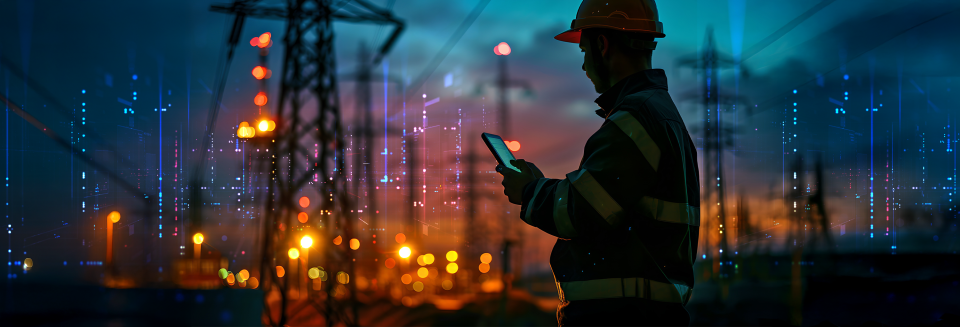
In recent years, extreme weather events have pummeled utilities across the Southeast. In September of 2024, Hurricane Helene hit Southeastern U.S.A., resulting in 6 million outages across South Carolina, Georgia, North Carolina, Florida, and Virginia. Just two years before that, Hurricane Ian tore through Florida and the Carolinas, knocking out power to more than 4 million customers in Florida and another 1.1 million in the Carolinas.
In these events, many communities faced days without power and millions of customers relied on utility companies for real-time updates and support. And yet customer satisfaction is declining (2023 Electric Utility Business Customer Satisfaction Study).
With storms causing massive outages year after year, utility companies must show up for customers with real-time answers, multilingual clarity, and high-quality support that holds steady even when the grid doesn’t. And customers expect it before the lights go out.
In 2025, the solution is CX innovation and AI in utilities. Though lagging after other industries in this area, utility companies are now using technology to meet customers where they are when it matters most.
Storm season exposes every weak link. Here’s how different utility models stack up:
Regardless of the model, one truth holds: If your communications plan can’t move as fast as your outage map, it’s already too slow. Your customers don’t just want updates. They want to trust that you are looking out for their families, and that you’ll be there when it matters most.
This isn’t just about homes going offline. It’s millions of calls, claims, and customer interactions surging all at once. And if your CX operations can’t withstand that tidal wave? Your brand doesn’t survive the week.
Fall 2024 saw back-to-back storms: Helene and Milton in Florida. Helene caused roughly 6 million outages across the Southeast. And just 13 days after, Milton left about 3.4 million Floridians in the dark.
While future storm intensity remains uncertain, past hurricane trends point to increasingly powerful storms in 2025 and beyond. This raises the risk of outages and the need for reliable, high-quality support for utility customers.
While English is the most commonly spoken language in the USA, almost 66 million people use a non-English language at home. In fact, nearly 30% of all households in Florida reported speaking a different primary language according to a 2022 census.
Yet too many utilities still send emergency alerts in English only. This resulted in communication failure, with customers routed to chatbots and not receiving the support they needed.
Translation isn’t a feature, it’s risk mitigation. Ensure that your systems are equipped to serve all consumers, regardless of language.
When customers need support the most, many experience subpar service in the form of poor updates, long wait times, and inefficient chatbots.
In a 2023 study, 71% of business customers reported that their utility companies failed to provide outage-related updates.
Outside of storms, customers complain about long hold times despite energy companies raising rates.
And though many utility companies are turning to self-service for faster support, execution still falls short as current chatbots lack personalization, fail to resolve complex issues, and don’t provide human interaction, resulting in more time consumed, frustration, and a breakdown in trust.
When storms hit, utility companies experience a surge in customer calls, chats, and emails. AI tools like EverAI, which are designed to accelerate the agent-lifecycle by 20-30%, can speed up agent-readiness and make it possible to ramp fast during seasonal peaks. This ensures that every customer receives fast, consistent answers, no matter the weather or circumstances.
With real-time voice AI, such as EverAI Accent & Clarity, call quality improves remarkably. Background noise is canceled, audio is sharper, and accents are neutralized. Not only do champions sound better—communication is more seamless no matter where customers are or what’s happening around them.
The Southeast has the most storm-tested utility environment in the U.S., making it the ideal proving ground for proactive CX. Leveraging technological innovation, utility companies can send pre-storm outbound messages in multiple languages customized by zip code and implement tiered communications that evolve from education to safety to restoration.
They also conduct drills with CX partners—not just linemen—to stress-test service channels, deploy always-on multilingual chatbots trained on outage protocols, and maintain dedicated surge-ready staffing pools that activate within 48 hours.
The difference between one-hour and six-hour hold times? Smart automation. The difference between chaos and calm? Predictive intelligence.
Leading CX providers are harnessing digital twins to model outages before landfall, AI-driven voice and chat to scale response without losing quality, and machine learning to anticipate customer sentiment during a crisis. AI doesn’t replace empathy—it clears the path so it can be delivered faster.
There’s a lot of talk about AI in utilities, but few apply it where customers feel it. Here’s what’s still missing:
When customers get one ETA from a text and another from your IVR, you’re not just creating confusion—you’re undermining trust. Every channel needs to pull from the same real-time data, so updates are consistent, accurate, and credible.
Flipping the lights back on is only half the job. Proactive follow-ups—thanking customers for their patience, checking for lingering issues, and sharing prevention tips—turn a frustrating experience into an opportunity to rebuild goodwill.
Storm surges can push demand to 300% or more. Without scalable systems, dynamic scripting, and AI-enabled support, agents get overwhelmed, and customers get left waiting. Modern resiliency means the ability to ramp in hours, not days, while keeping service quality steady.
Customers won’t remember your restoration estimates. They’ll remember how you made them feel while they waited. Even if the grid fails, your CX can't.
No matter what, put your best foot forward, so you deliver calm and care in the middle of chaos.
If you’re still building your storm strategy around hold music and hope, give us a call and let’s talk about how AI in utilities can secure your CX for this hurricane season.